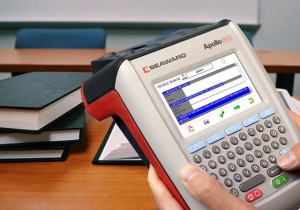You have a certification to carry out PAT testing, but you are not sure which PAT tester you need? You are not alone!
We are here to provide you with the basic guidelines to help you make the right choice. The market offers a huge range of products with different features from very different brands. To try and make things a bit easier for you, we have answered the most important questions that you need to consider when picking your perfect PAT Tester.
What is your budget?
There are many makes and models to fit most budgets, so whether you need to test 50 or 5000 items there will be a model to suit your application. There are basic PASS/FAIL instruments that carry out fundamental safety checks, to more advanced models with comprehensive PAT testing capabilities including some with Bluetooth technology and test data downloading capabilities.
How many appliances would you like to test in a year?
If you do not have a huge number of electrical appliances it is better to choose a cheaper, simpler model, allowing you to carry out tests and record your results in a log book. These are often referred to as `Manual PAT Testers`. However if you have large premises, with more than 500 appliances, you will probably be better off choosing a PAT tester with a memory to record and store the results. These testers are referred to as a` Downloadable PAT Testers`.
How would you like to store the test results?
This is probably one of the most important questions, some models can store up to 10 000 individual testing records alongside additional information such as the user, test status and date. All this information can be directly downloaded to your PC via USB connection or can be sent wirelessly via Bluetooth.
What type of test do you have to carry out?
The method by which an electrical appliance has been constructed determines its class and the test that you need to carry out. The list below shows the tests that should be carried out depending on the Class of the appliance.
Class I (metal): earth continuity and insulation resistance.
Class I (plastic): insulation resistance.
Class II: insulation resistance.
3-core power cord: earth continuity, insulation resistance and polarity.
2-core power cord: inspection only.
How can you test 110V equipment?
All the PAT testers we sell are ready to be used in dangerous environments and test 110V equipment. You only have to use our adaptor to connect to specific 100V instruments. The yellow capped adaptor can be identified easily and is suitable for all makes and models of PAT testers.
Once you have the answers to these questions you can then begin to narrow down the choice of PAT testers available.Take a look at this PAT Tester comparison chart.
If you have need further assistance call our sales team on 0845 365 72 77 or visit the browse the full range of pat testers here https://www.pattesters.co.uk/all.


